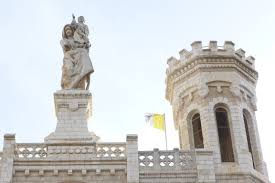
Less than 3 km from where we live on Jerusalem’s Mount Scopus, just opposite the New Gate in the Old City wall, is the lovely Notre Dame Hotel with a statue of Mary with baby Jesus on the roof and a permanent exhibition of the Turin Shroud that has entranced Butch and me.
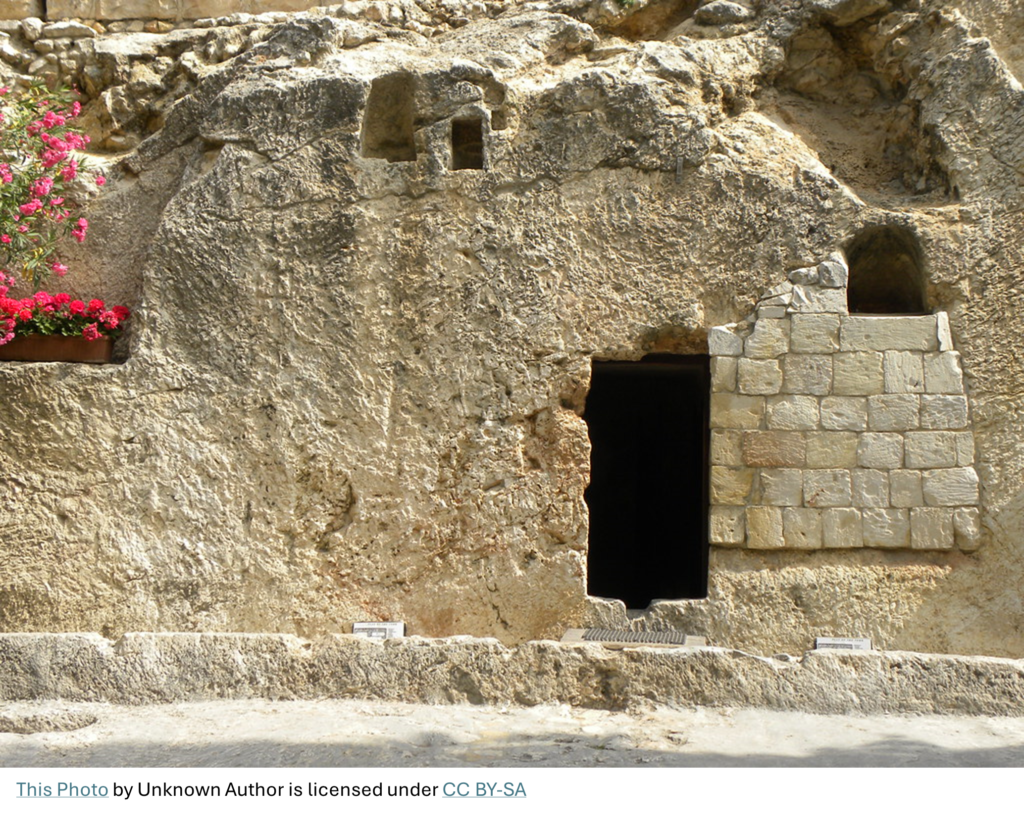
It seems very possible to me that it could be the Shroud.
The Turin Shroud is a length of fine linen, 4.35m long by 1.1m wide, bearing the full-length front and back images of a crucified man as well as many other images, including a large number of flowers and plants.
This crucified man wore a crown of thorns, had pierced wrists, ankles and side. His legs had not been broken to hasten death, as was often the Roman way. In fact, everything we know happened to Jesus happened to this crucified man.
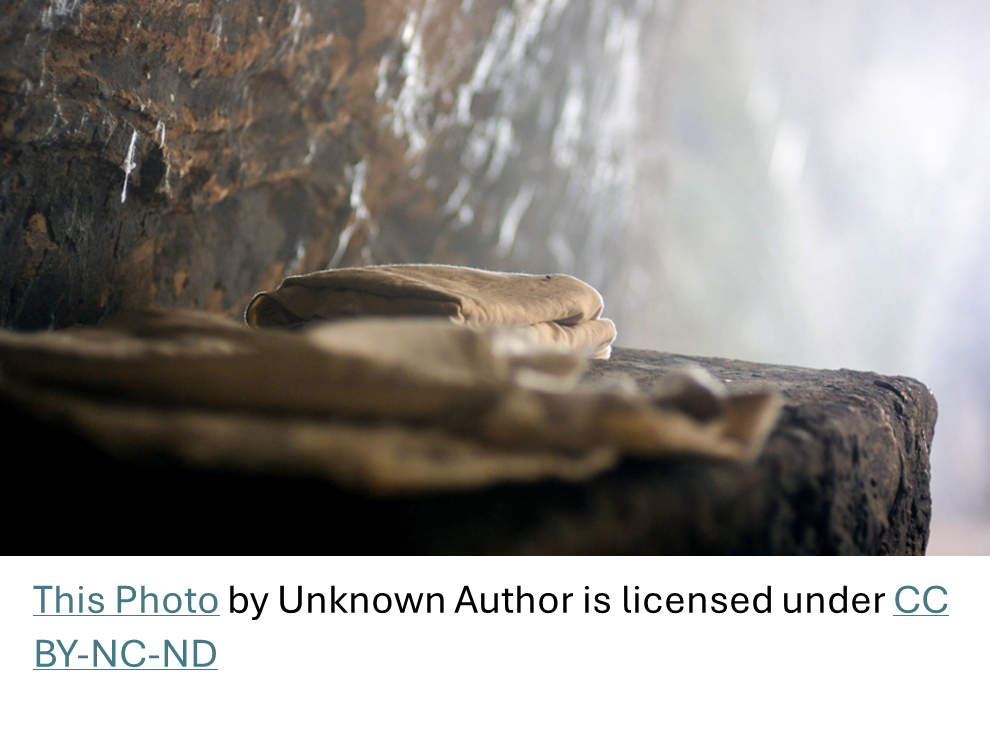
How could the likeness of a crucified man be ‘burnt’ onto a length of linen? No one knows for sure but these people have mulled over the question some: How Did the Shroud of Turin Get Its Image? (Hint: Think Radiation.) (magiscenter.com):
Puzzling Information
The image is on the outer surface of the fibres, therefore it could not have been made by chemicals, (which penetrate deeper into cloth). Furthermore, we see the whole body, although the draped cloth would not have reached some areas. Neither has the image been made by vapours of chemicals or bodily emissions from the corpse or, again, areas of the body would not have been imprinted— the sides of the bridge of the nose, for instance.
The only plausible explanation this organization has is a burst of “vacuum ultraviolet radiation” that ‘stained’ the outer fibres of the shroud, without scorching them, producing a three-dimensional negative of the body, front and back.
A Tall Order
However, for this to work, you would need several billion watts of light radiation, without generating heat or the cloth would have vaporized. No such naturally caused incident is known to science.
Unsolved Puzzles
Two further issues surrounding the shroud defy any other explanation than miraculous.
Remember, there is no image on the inside of the cloth: the image is only on the outside, implying that radiation “collapsed into (and through) a mechanically transparent body.” The ultraviolet light that imprinted on the cloth would have had to completely surround the outside of the body. However, we can see the inside of the body— the skeleton— as well as the flesh. It is like an x-ray. This further points to the effect of the cloth collapsing through the body.
The Turin Shroud’s Radiation
What could be the source of such radiation? We only know that it makes sense since, when Jesus was raised from the dead, his body changed into “a glorified, transphysical one,” able to pass through doors but at the same time, a body that his disciples could touch.
What is the Shroud’s Date?
Recently, threads have been deemed comparable with a piece of fabric known to be from the Siege of Masada in Israel, 55-74 AD: dating the Shroud to the 1st century.
Flowers and Plants
When Joseph of Arimathea laid Jesus in his tomb, Nicodemus, the man who earlier had visited Jesus at night, “brought a mixture of myrrh and aloes, about seventy-five pounds,” (John 19:39). This is a vastly extravagant amount of unction and plants. To set this in perspective, the first century Jewish historian Josephus boasts that a famous teacher was buried with half as many spices— some forty pounds.
The late Avinoam Danin, a Jewish botanical expert from the Hebrew University in Jerusalem, spent years examining the imprints of flowers and plants that cover the Shroud. His opinion: “Observing the images of plants in the same locations on photographs produced by different photographic techniques and on the linen of the Shroud itself proves that they are real and not artifacts.” He locates them all to the Jerusalem area. In fact, some of the species identified on the shroud are found nowhere else. Their flowering season is March-April, which coincides with the Jewish Passover, the season of Christ’s crucifixion.
History
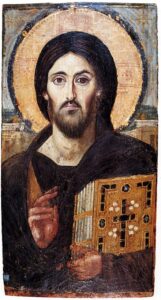
The shroud has been documented as being in Turin in 1578. However, there is good evidence that reliably dates it back to the 8th century. Further, the face of an icon known as ‘The Pantocrator’ at Saint Catherine’s Monastery in the Sinai Desert, dated to 550 AD, bears a remarkable resemblance to the face on the Shroud. Did the shroud inspire it?
Sudarium Head Cloth
A sudarium (head cloth) is mentioned in both Luke and John’s Gospels. There is an ancient sudarium in Oviedo, Spain – a dirty, wrinkled linen cloth, stained with blood – that has been claimed to be that of Jesus. Although it lacks a facial image, its marks can be paired with those of the shroud, which Danin has described as the, ‘ferocious thorns of two trees’ .
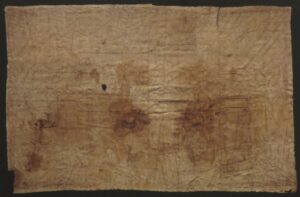
The Spanish Centre for Sindonology (Study of the Shroud), based in Valencia, has investigated both the Shroud and the sudarium and has confirmed the “overwhelming probability” that the Shroud of Turin and the Sudarium of Oviedo covered the same victim. Blood flows, puncture and other wounds on the face and neck coincide, as do the presence of aloe and myrrh.
Jesus is also the only crucifixion victim known to have been crowned with thorns.
Further, the Shroud of Turin has a distinctive trickle of blood on the forehead above a drop of the same blood from a puncture wound. the same markings appear on the sudarium in the same position.
Both linens covered a man who was crowned with thorns and struck in the face just as Scripture describes Christ’s death.
Holograph and Artist’s Impression
Today, we have reached the Shroud’s ‘holographic era’: 3D images of the man, as if he has come to life. I find them moving and impressive. Convincing.
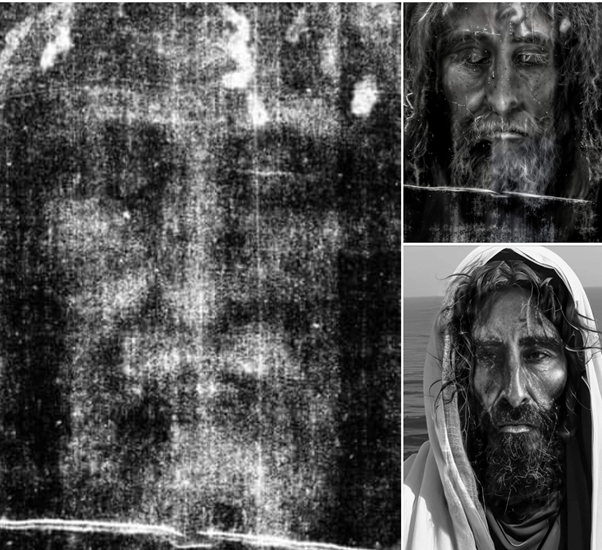
What do you think? Please share your opinion in the comments below.

Sign up in the sidebar to receive my newsletters from Jerusalem and be the first to hear about my posts.

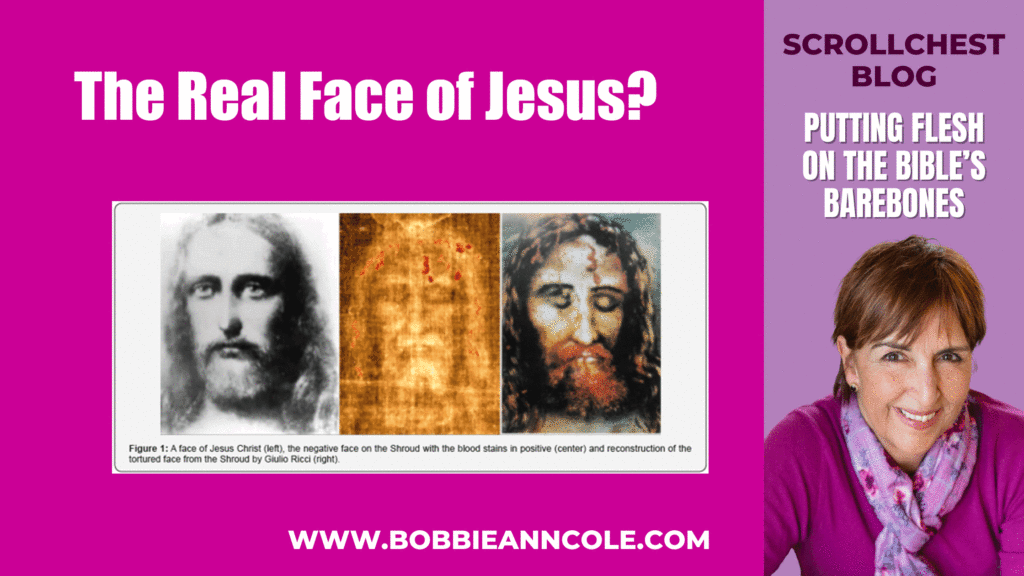
I have no explanation but it seems improbable to me that a cloth would be laid full-length below and above a body, rather than being wrapped around it. And there are so many fake artefacts relating to Jesus.
Dear Viktor, The shape of the Turin Shroud is a winding sheet. Jews were using these 2,000 years ago. https://www.chabad.org/library/article_cdo/aid/5282847/jewish/Why-Are-Jews-Buried-in-White-Linen-Shrouds.htm#:~:text=The%20time-honored%20Jewish%20custom%20is%20to
If this is the Christ or if it is not the Christ imaged on the cloth , how will it affect our faith
will we believe when there is no cloth?
or like Thomas will we be demand to have a picture
and have it so that we can prove or improve our lack of faith
Do you not think it would be a delightful wonder to have this, so that we could see His face?
I’m not entirely convinced although it would be nice to think it was. Unless the radiation has preserved the cloth surely cloth made in the first century would not survive until now.
The radiation theory sounds interesting when we consider why the Lord went to the cross in the first place. Father was pleased with His obedience and maybe it was when His body was changed from one of flesh and blood to flesh and bone (immortal) when He was able to come through walls and doors without opening them etc.
Like Viktor I am not entirely convinced.
Thanks for commenting, Esther. I have written a positive piece because I would very much like it to be so: that it really is the Shroud that wrapped Jesus. And, if it is not, what is it and how did it come into existence?
With regard to the aged fabric, I noted this: Recently, threads have been deemed comparable with a piece of fabric known to be from the Siege of Masada in Israel, 55-74 AD: dating the Shroud to the 1st century (I included a link to the source page). I presume that, if fabric from 55-74AD still exists, then a shroud of similar age could also.
Having read Lynne’s reply, the Psalmist says that the Lord’s body would not see corruption, I.e. Decomposition so I cannot think that is the answer. It is an amazing thing whether it is THE ONE or not. Another thought as to why it is still intact all these centuries later. Depends a great extent on where it was stored, rather like the Dead Sea scrolls.
Thank you for your further thoughts. You are right about the survival of the Dead Sea Scrolls: in a hot, dry climate they have survived. And the fragment of cloth for the 1st century is from nearby Masada. I’m not sure where that leaves us since, if suppositions are correct, the shroud would have done really well at St. Catherines in the southern Negev Desert but surely less so in Turin in N. Italy?
This is an interesting topic, WOW I had no idea.
We know so little of the extraordinary BIBLE our Lord’s love letter to us…
This is interesting Bobbie, thank you for sharing…
I am intrigued by this post.
Fr. Spitzer concludes:
“Currently, the known laws of physics cannot explain how a decomposing body can emit an intense burst of vacuum ultraviolet radiation. Furthermore, they cannot explain how such a body could become mechanically transparent and emit light from every three dimensional point within it.”
I look forward to chatting with you about this.
What you have copied here, Lynne, is the conclusion of one scientist who tried to explain the phenomenon of the imprinted shroud. It is truly a wonder. There is currently no other ready explanation for one-sided printing, without the dips and missing elements that a draped sheet might leave and including skeleton and organs than that it was generated by ‘a decomposing body’, which is amazing!